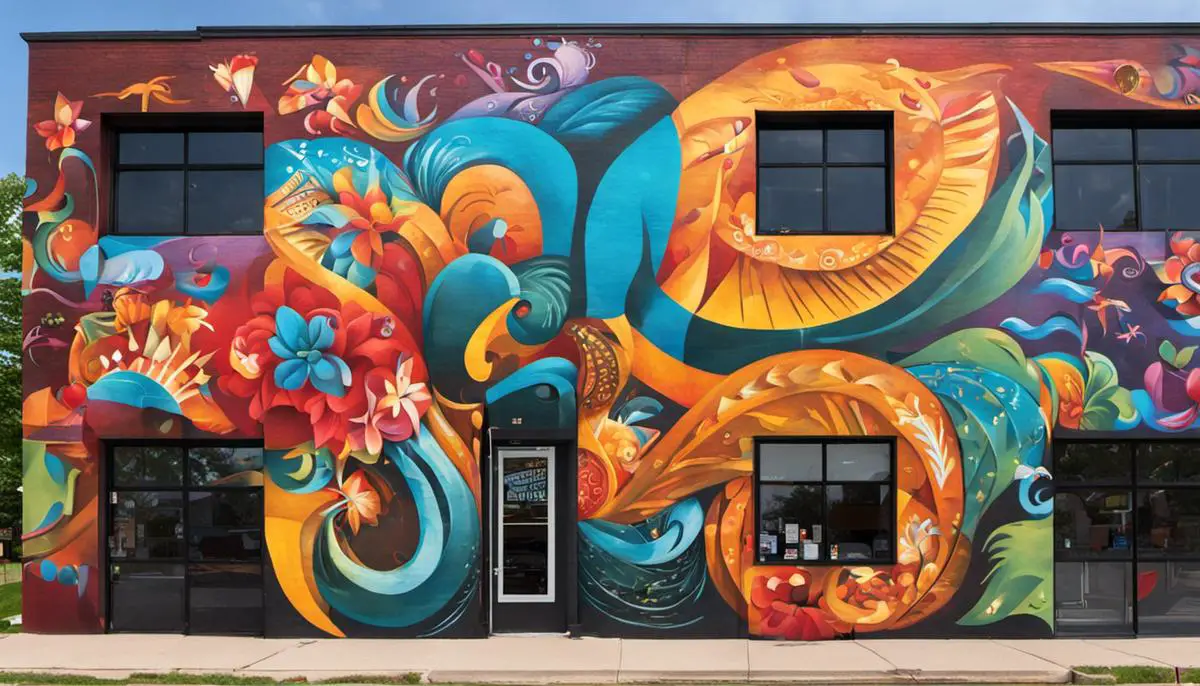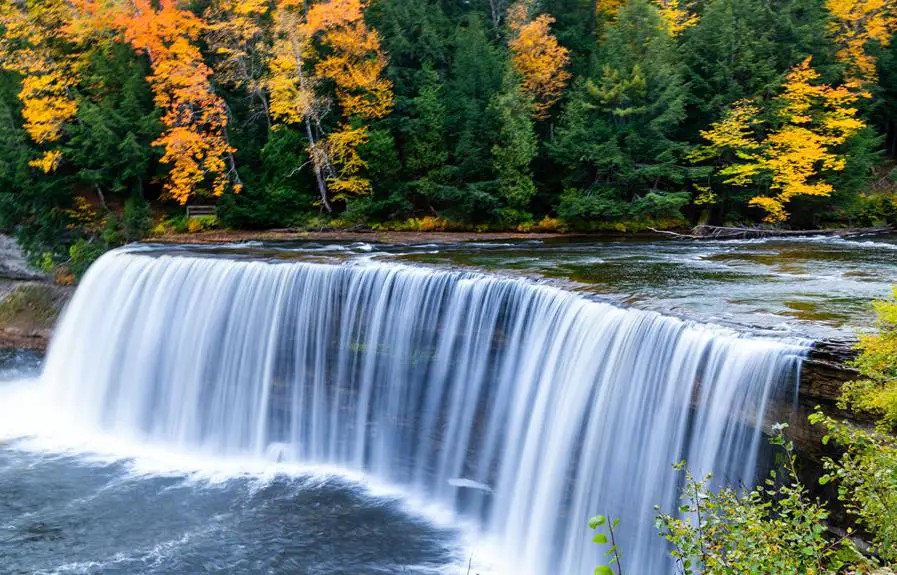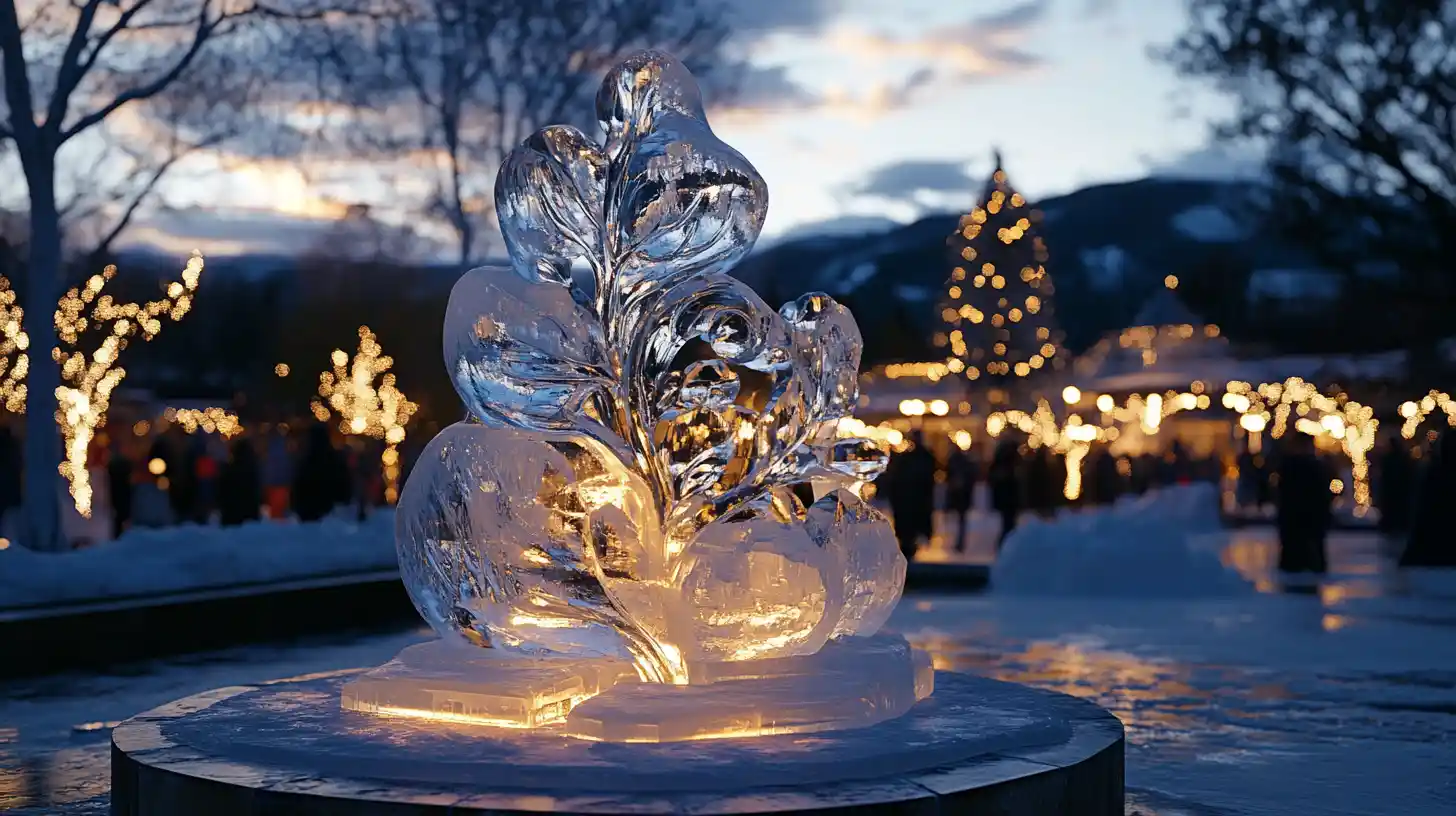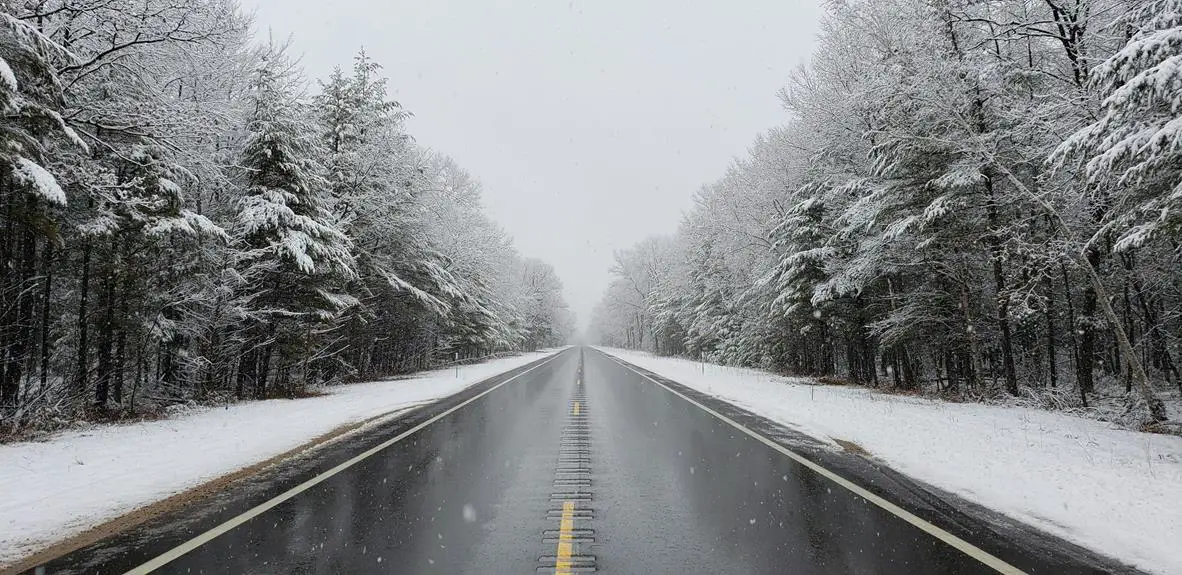The cultural fabric of Michigan is a rich tapestry entwined with a vibrant history, and nothing exemplifies this more vividly than the state’s profound street art landscape. The inception and subsequent evolution of street art in Michigan has been fuelled by a concoction of social, political, and cultural elements, all of which have played instrumental roles in shaping this artistic revolution.
From quaint townships to bustling cities, street art of Michigan has emerged as a compelling narrative, painting stories of creativity, resistance, identity, and transformation. This eclecticism manifests through numerous prominent artists who wield their brushes with a distinctive touch, marking their individual expressions on the concrete canvas of Michigan. A tour through the iconic street art locations is akin to traversing the timeline of art, culture, and history in this diverse state. It’s a journey inspiring interpretations, initiating dialogues, and influencing societal change.
History of Street Art in Michigan
Origins of Street Art in Michigan
Street art in Michigan traces its origins back to the late 20th century, and it has roots in various movements, such as graffiti art and community mural projects. It grew as an expressive platform for the marginalized and disaffected youth, particularly in the inner-city areas of Detroit. Echoing national trends, Michigan’s street art began as a form of rebellion and a cry for social justice amidst periods of economic decline and urban decay.
In the early years, it was seen as a sign of blight, dismissed as vandalism, or associated with gang activities. However, over time, street art has evolved into an accepted and appreciated form of public art that communicates powerful social, political, and cultural messages. Influential artists such as Tyree Guyton, known for his polka-dotted ‘Heidelberg Project’ on the east side of Detroit, helped redefine street art’s purpose and potential.
Significant Timelines in Michigan Street Art
The growth and development of street art in Michigan have seen several key timelines and milestones. The 1980s marked the inception of many pioneering street art projects, including Guyton’s ‘Heidelberg Project’ in 1986. This artistic endeavor transformed blighted city blocks into an open-air art installation using materials salvaged from abandoned homes.
The turn of the 21st century saw a wave of street art festivals, gatherings, and initiatives that bolstered the genre’s growth. One of the most notable events was the Detroit Mural Factory’s establishment in 2003. A collective of graffiti artists, they hosted live mural painting and exhibitions, contributing significantly towards legitimizing street art in the city.
In 2010, ‘Murals in the Market,’ a world-class street art festival, came to fruition in Detroit’s Eastern Market district. This annual event draws artists from around the globe, transforming city buildings into monumental canvases. Recently, in 2019, the acclaimed public art experience ‘The Belt’ emerged as parts of the city center were reimagined through striking murals and installations.
Current Landscape of Michigan’s Street Art
Presently, the street art scene in Michigan is vibrant and dynamic, as it goes beyond traditional graffiti to incorporate a blend of artistic techniques and digital technologies. Artists pull their inspiration from both local and international issues, focusing on significant themes like social justice, environmental conservation, racial equality, and the exploration of cultural identity.
Michigan’s socio-political climate greatly influences the style and substance of its street art. Recurring state-wide struggles with gentrification and economic inequality serve as common themes in many of these artworks. Because of these complex issues, street art has evolved into an indispensable resource for engaging with the community, sparking conversations and initiating change.
The importance of Michigan’s street art now extends beyond just aesthetic appeal. It acts as a historical document, a method of self-expression, and a driving force for community renewal. Its ability to transform urban spaces, trigger thought-provoking discussions, and mould the state’s cultural identity, is unique.
Key pieces of unforgettable Michigan street art include the towering ‘Stay For A While’ mural on Joy Road and the depiction of an African American woman crowned with sunflowers in Ann Arbor, that encapsulate the spirit of the state.
These works of public art also become notable tourist destinations, boosting Michigan’s cultural tourism. Simultaneously, they bring focus to pressing societal problems. Amid the intricacy of Michigan’s urban existence, street art persists as a vivid, provocative, and compelling aspect.

Notable Michigan Street Artists
Fel3000ft: Fostering a Positive Environment through Surreal Imagery
When one speaks of Michigan’s vivid street art culture, a significant name that emerges is Detroit native Fel3000ft. Known extensively for his surrealistic artwork imbued with lively, psychedelic elements, Fel3000ft’s finesse is evident at the Lincoln Street Art Park where he painted a sprawling mural. This extraordinary composition melds several components — including iconic Detroit landmarks, mythical creatures, powerful social messages, and exuberant color bursts. Fel3000ft’s distinctive artistic approach aims to inspire positivity, leading spectators to discover and appreciate beauty in unexpected corners of Detroit’s rugged urban landscape.
Sheefy McFly: Convergence of Arts and Music
Detroit-based Sheefy McFly is another artist who has brought significant contributions to Michigan’s street art. He uses his art as a means to bridge the gap between music and visual art. His works are generally bright and bold, often infused with abstract elements and edgy designs that invite viewers to engage with his unique visual language. One of his most notable pieces is a large-scale abstract mural at Detroit’s Hart Plaza, a testament to Detroit’s vibrant creativity and the artist’s eccentric style.
Ellen Rutt: Merging Geometry with Social Narrative
Ellen Rutt, known for her dynamic and geometric murals, uses her artwork as a thoughtful medium for social discussion. Her prominent work “We’re In This Together” is located in Detroit Eastern Market, a vivid mélange of patterns, shapes, and colors, signifying unity and diversity. Her bold use of patterns and colors not only make for visually captivating works that enliven the streets of Detroit but also carry profound messages of social connectivity.
Sintex: Building a Cultural Narrative through Realistic Portraits
Sintex is another influential street artist whose works are scattered throughout Detroit. This artist’s distinctive style of creating art involves using realistic portraits to celebrate African American culture and history. One of his most recognized works is a mural on the Detroit’s Madison Building, featuring portraits of influential African Americans. Through his murals, Sintex aims to create a dialogue around the representation and recognition of African American culture in contemporary society.
Hubert Massey, a Leading Name in Michigan Street Art
Renowned for his dedication to fostering community spirit, Hubert Massey is an artist who has made significant contributions to Michigan’s street art culture. His alluring frescos, often exhibited in public spaces, include “Detroit’s Renaissance,” a piece located in Detroit’s Rivard Plaza. This artwork encapsulates the soulful energy of Detroit by portraying a community engrossed in various dynamic activities. Striving to mirror the local culture and its social justice objectives, Massey’s murals are a reflection of the community’s dreams and goals. Further strengthening his artistic impact, Massey works with a wider range of mediums, including mosaics, prints, and sculptures.

Photo by jamesgarmandotcom on Unsplash
Tour of Iconic Michigan Street Art Locations
The Colorful Canvas of Detroit’s Murals in the Market
Detroit’s historic Eastern Market district is a burgeoning platform for street artistry in Michigan, most notably, the Murals in the Market. With over a hundred murals, this vibrant area plays host to the creative expression of artists from local neighborhoods and across the globe. Each piece of artwork is unique, translating various themes and styles from abstract interpretations of the city’s spirit to potent conversations about social justice.
One such mural, “Spirit of Detroit” by Pat Perry, exemplifies the resilience of Detroit’s communities. Depicting a giant worker carrying a small city on his back, the mural portrays the strength and determination of Detroit’s industrious citizens. The annual Murals in the Market event has become a hotspot for both locals and tourists to explore the narratives that unfold in these street art masterpieces.
Public Art in Grand Rapids
Moving westward from Detroit, the city of Grand Rapids hosts some of the state’s magnificent street art. Downtown Grand Rapids heavily emphasizes public art, especially due to the city’s annual ArtPrize event, one of the world’s largest art competitions that turn the city into an open-air gallery. Each year, artists use the city as their canvas to express their creativity. The “GR Loves GR” mural on the side of The B.O.B. downtown is one of the most iconic pieces, showing the city’s love and pride for its community.
Street Art in Ann Arbor
Ann Arbor’s Graffiti Alley, located in the city’s downtown between Liberty Street and Washington Street, is a constantly changing canvas of graffiti artistry, showcasing a blend of vibrant colors and lively messages. Each visit to the Alley presents a different experience because the walls get new layers of artwork regularly. This interaction of the public with art encourages dialogue and resonates with the city’s progressive vibe.
Flint’s Downtown Murals
Flint, Michigan, often recognized for its water crisis, holds a presence in the state’s street art scene too. Many artists have used the city walls as their canvas to shed light on social issues and represent the resilience of the community. There are over 50 murals in the downtown area, each unique and powerful. Notable among these is Charles Boike’s “Overflowing Rapids,” a poignant commentary on Flint’s water crisis.
Street Art in Lansing
Lansing, Michigan’s capital, hosts its array of attractive murals. Old Town Lansing stands out with its array of expressive murals, like Brian Whitfield’s “Rhythm and Flow” on the back of Elderly Instruments, a beloved musical instrument store in Lansing. The mural depicts flowing musical notes, representing the city’s rich history in music.
Michigan’s flourishing outdoor art gallery has sparked much enthusiasm among both locals and tourists alike. In cities like Detroit, where Murals in the Market captivate visitors, to Grand Rapids during the ArtPrize season, Michigan’s vibrant street art brings life and character to otherwise ordinary urban landscapes. These intricate murals not only beautify the surroundings but also represent a significant recall of the state’s rejuvenation efforts. With their remarkable essence, they’ve turned Michigan into a captivating and unforgettable hub for street art enthusiasts.

Interpretations and Impact of Michigan Street Art
Diving Deeper into Michigan’s Street Art
Michigan’s street art isn’t just visually appealing; it goes beyond aesthetics to reflect the energetic spirit of the state’s metropolitan areas. These artworks narrate stories of social and political landscapes, as well as personal experiences, giving each piece a unique depth. One cannot help but find themselves drawn to questioning societal norms when gazing upon Shepard Fairey’s “Obey Giant” mural in Detroit, a powerful critique on propaganda. In a similar vein, Detroit native Sintex creates striking portraits of African American figures, a compelling testament to racial, cultural, and communal identity. The extraordinary ability of these works to inspire people to ponder and engage with the challenging themes they present is a testament to the real power and influence of street art.
Impact on Society and Culture
The captivating murals in Michigan cities like Detroit and Grand Rapids significantly impact local societies and culture. Street art has proven to be a form of revitalization, transforming crumbling walls and seemingly forgotten urban surfaces into dynamic public galleries. The Heidelberg Project, created by artist Tyree Guyton in Detroit, has turned a decaying neighborhood into an outdoor art project, combatting urban blight while promoting community cohesion and dialogue.
Influence on Community Engagement and Economy
Michigan’s vibrant street art scene also actively promotes community engagement. Public art projects, such as the Grand Rapids ArtPrize, invite both artists and community members to interact through creative expression. These projects foster a sense of belonging and active participation in communal spaces, further deepening community bonds. They build bridges of understanding and dialogue between diverse social, racial, and economic groups often isolated from each other in urban contexts.
Furthermore, street art in Michigan contributes significantly to the local economy. Festivals like the Grand Rapids ArtPrize attract a considerable number of visitors each year, boosting tourism and local businesses. In Detroit, the “Murals in the Market” festival helps to stimulate economic development by drawing attention to the city’s burgeoning Eastern Market district. Murals become not only a source of urban beautification but also markers of economic resilience and innovation.
Street Art as the Pulse of Michigan’s Cultural Identity
Developing at profound pace, street art is swiftly becoming an integral part of Michigan’s cultural narrative. Offering a vibrant and unique testament to the region’s diverse individual and collective experiences, these expressive graffiti pieces and murals beautifully encapsulate tales of hardship, hope, and joy. The ephemerality of street art lends it both a touch of poignant transience and a sense of continual evolution. Yet, as pieces come and go, the overall resonance of Michigan’s thriving street art scene endures, shaping urban landscapes as well as influencing how people perceive the state’s dynamic culture and strong sense of community.

Future of Street Art in Michigan
Dynamic Transitions within Michigan’s Street Art Scene
Mirroring global trends, street art in Michigan is experiencing fascinating shifts — transitioning from its historical role as a form of protest and unique expression, it is now garnering validation as an esteemed art form. This changing perception has led to a revitalization of the genre, which now incorporates a vibrant mix of graffiti, pop-art, surrealism, and other disciplines, thereby creating a playground of artistic innovation.
A significant emerging trend within Michigan’s street art is the noticeable move towards greater sustainability and eco-conscious creation. Artists are now leaning towards environmentally friendly materials, such as biodegradable paints and repurposed items, for their artistry. The surge in environmentally-themed art across the state is a testament to artists recognizing and addressing the reality of climate change and other critical environmental issues through their work.
The Role of Upcoming Street Artists
The future of Michigan’s street art lies in the hands of its current emerging artists. As these new artists experiment with different styles and methods, they are pushing the boundaries of what’s considered street art.
Embracing different cultures’ influences, these artists are creating experiences that highlight the diversity present in Michigan. Artists such as Ellis Sherman and Mariah Reading are reinventing conventional street art by intermingling traditional pop-art and graffiti styles with vivid, abstract expressionism.
Political and Social Influence on Street Art
Political and social climates significantly influence the production and themes of street art. As artists react to ongoing socio-political trends, their works often reflect these changes. Michigan’s street art scene is no different. Given the state’s complex political history, coupled with landmark events such as Detroit’s bankruptcy and subsequent revival, street art has been a crucial gauge of public sentiment.
Street art has increasingly become a platform for promoting social justice issues, spreading awareness about systemic racial discrimination, and fostering unity and equity. The varied issues highlighted reveal the influence of current socio-political conditions on Michigan’s street art trajectory.
The Transformation of Michigan’s Street Art Scene
There is an increasing trend of local communities and governments providing more platforms for street artists. Festivals such as the Grand Rapids’ ArtPrize and the Detroit Murals in the Market festival have encouraged Michigan residents’ engagement and appreciation for street art. They provide a more extensive platform for artists to express their creativity, leading to a more vibrant and dynamic scene.
The future projects a more positive image for Michigan street art. The evolution of styles, the influence of socio-political changes, the emergence of new artists, and the acceptance by local communities all contribute to this image. As the scene continues to evolve and draw more attention, it will undoubtedly become ingrained further into Michigan’s cultural fabric.

Michigan street art, characterized by astonishing variety and astonishing dynamism, has time and again demonstrated its potential as a driver of economic stimulation, communal engagement, and cultural infusion. As we look towards the horizon, the future of street art in Michigan positively gleams with promise.
With emerging artists, evolving styles, and possible shifts in societal and political perceptions, an exciting transformation seems poised to redefine Michigan’s vibrant urban canvas. Ultimately, the profound impact of street art on Michigan’s community and society is a testament to its sustained relevance and the necessity of fostering such creative freedom.
As the state continues embarking on this artistic journey, the episodic stories etched on Michigan’s streets become integral to its cultural narration, enriching the lives of both its residents and visitors.






